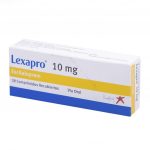Levonorgestrel-Releasing 5 Year System – Intrauterine, Mirena
Medication Uses How To Use Side Effects Precautions Drug Interactions Overdose Notes Missed Dose Storage USES: This product is a small, flexible device placed in the womb (uterus) to prevent pregnancy. It is used by women who have had at least one child and want a long-term reversible birth control method (up to 5 years). It is also used to treat heavy menstrual bleeding in women who choose this birth control method. The device slowly releases a hormone (levonorgestrel) similar to a hormone produced by women. It prevents pregnancy by thickening cervical fluid, interfering with sperm movement, reducing sperm survival, and thinning the lining of the uterus. It may also prevent ovulation, but this is not the primary mechanism in most women. This product does not protect against sexually transmitted diseases (such as HIV, gonorrhea, chlamydia). HOW TO USE: Read the Patient Information Leaflet provided by your pharmacist before starting use. The leaflet contains important information about this device. If you have questions, ask your doctor or pharmacist. This device is inserted into your uterus by a healthcare provider during an in-office visit. It remains in place for up to 5 years. Schedule a follow-up visit 4 to 12 weeks after insertion to ensure proper positioning. This device may shift or come out on its own. After each menstrual period, check its position. Learn how to do this from the Patient Information Leaflet or your healthcare provider. If it comes out or you cannot feel the threads, contact your doctor and use an additional form of non-hormonal birth control (such as condoms, spermicide) until directed otherwise by your doctor. To continue using this birth control method after 5 years, remove and replace the used device with a new one. If you want to stop using this method, your healthcare provider can remove the device. SIDE EFFECTS: Pain, bleeding, or dizziness may occur during and after device placement. Cramps, irregular menstrual periods, and spotting may occur, especially during the first few weeks. Headache, nausea, breast tenderness, and weight gain may also occur. If these effects persist or worsen, notify your doctor promptly. After adjusting to this product, it is normal to have fewer bleeding days during your menstrual periods, and some women may stop having periods altogether. This will not affect your ability to become pregnant after stopping use. Serious side effects are rare. However, seek immediate medical help if you experience stomach/abdominal pain, vomiting, lumps in the breast, changes in mood, unusual vaginal bleeding, dark urine, yellowing eyes/skin, or severe allergic reactions. Using an intrauterine device (IUD) may increase the risk of a rare but serious pelvic infection (PID), which can cause permanent damage and infertility. The risk is higher in women with multiple sexual partners, an STD, or a history of PID. Contact your doctor promptly if you experience symptoms of PID. This is not a complete list of side effects. Contact your doctor or pharmacist for more information.
PRECAUTIONS: Before using this device, inform your doctor or pharmacist if you are allergic to levonorgestrel or any other progestins, or if you have any other allergies. This product may contain inactive ingredients that can cause allergic reactions or other problems. Talk to your pharmacist for more details. Before using this product, disclose your medical history, especially if you have been pregnant recently, are currently breastfeeding, have bleeding or blood disorders, hypertension, abnormal breast exams, cancer (particularly endometrial or breast cancer), depression, diabetes, severe headaches/migraines, heart problems, liver disease, ectopic pregnancy, stroke, unexplained vaginal bleeding, uterus problems, or conditions that weaken the immune system. If you or your partner have multiple sexual partners or a sexually transmitted disease, this may not be the best birth control method for you. If you contract an STD, contact your doctor immediately. Before undergoing surgery, inform your doctor or dentist about all the products you use. This device should not be used during pregnancy. Consult your doctor if you are pregnant or think you may be pregnant. Levonorgestrel passes into breast milk. Consult your doctor before breastfeeding. DRUG INTERACTIONS: Drug interactions may change how medications work or increase the risk of side effects. Keep a list of all the products you use and share it with your doctor and pharmacist. Do not start, stop, or change any medications without your doctor’s approval. OVERDOSE: Overdose with this device is highly unlikely. If an overdose is suspected, contact a poison control center or emergency room immediately. NOTES: Keep all regular medical and laboratory appointments. Undergo regular check-ups, including laboratory and medical tests, to monitor for side effects. Follow your doctor’s instructions for breast exams and report any lumps immediately.
MISSED DOSE: Not applicable. STORAGE: Store at room temperature. Keep all medications and medical devices out of reach of children and pets. Do not flush medications down the toilet or pour them into drains unless instructed to do so. Properly discard expired or unused products. Consult your pharmacist or local waste disposal company. Information last revised November 2013. Copyright(c) 2013 First Databank, Inc.


